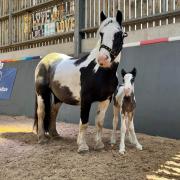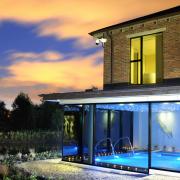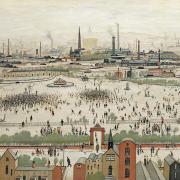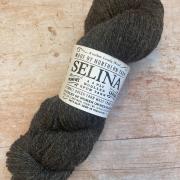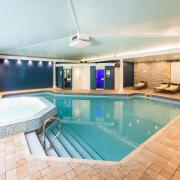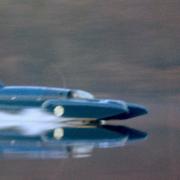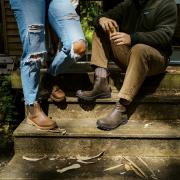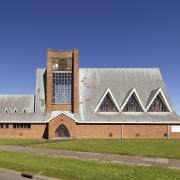While Britain's shoe makers have gone bust or moved abroad, a firm in Skelmersdale has taken astonishing strides towards creating a world class company. Roger Borrell reports
Photography by Kirsty Thompson
How many businesses can say their customers love the products so much they write poems about them? Or send in photographs showing their cat sitting in the box they came in? Or are so fond of them that when they wear out they grow plants in them?
If you think all sounds a shade eccentric, you may well be right. But one thing is certain - people who buy Lancashire-made Hotter shoes are extraordinarily passionate about them.
No one exemplifies that more than Steven Stewart, the quality control manager at the Skelmersdale headquarters. When he tells you: ‘This isn’t just a brand, it’s a way of life’ you can tell he means it.
To give an idea of the scale of interest, the factory runs guided tours for customers. They have enough bookings for the next ten years and that means they are now thinking of setting up footwear’s answer to Cadbury World.
While British shoe manufacturers are virtually extinct as a species, Hotter has adapted and evolved to survive in a world full of imports at give away prices. It means Lancashire has one of the biggest and best and most technologically advanced shoe factories in Europe.
To describe the output as ‘sensible shoes’ would probably send a collective shiver down the spine of the marketing department, but even they would admit Victoria Beckham isn’t going to be slipping her size sevens into a Hotter shoe anytime soon.
This is quality footwear for people of a certain age and the emphasis is unashamedly on comfort. Everything they do is dedicated to making you feel like you are not wearing shoes - from the feather-light soles to the soft-as-silk leather and the seductively squidgy padding around the ankles. Each sole is anatomically shaped to fit your foot and moulded using a clever compound that means you really are walking on air.
Gymnast Olga Korbut would struggle to match them for flexibility.Ladies who misspent their youth trying to cram feet into eye-wateringly fashionable shoes now suffer from hammer toes, bunions and corns. Step forward Hotter, bringer of soothing relief.
The modern Skelmersdale plant brings in leather components from as far as China but it take more than 100 talented Lancastrians on the shop floor to turn them into one of Britain’s most popular products. Around 8,000 shoes roll off the production line every day.
The phenomenal success, much of it by word of mouth, has seen output double and the total workforce rise from 50 to well over 200.‘All our peers have gone bust, voluntarily closed down or moved production to the Far East or Eastern Europe,’ says managing director and Hotter owner Stewart Houlgrave.
So why didn’t Hotter follow them? ‘I believe in the UK,’ says Stewart. ‘I wanted control of the product to guarantee quality and we can do that here because we have a fantastic workforce. There hasn’t been any great secret to our success - if you make great shoes, people will buy them.’
You only have to walk around the shop floor to see what he means. Among the many newcomers who have arrived as the business has grown, are people who have spent 40 years with the firm. There are husbands and wives here, sons and daughters.
The production is aided by the sort of impressive robotics display normally seen in car adverts. But Steven Stewart says: ‘You can have as many robots as you like, but it’s the people who make the difference. ‘We don’t criticise, condemn or complain - we work hard on training people and we want them to be proud to work here.’ Design director Paul Sayers adds: ‘It doesn’t matter if you have worked here 30 years or five minutes. It’s the same ethos - there’s a warm welcome and we want people to pass that on to the next person joining the company.’
Attention to detail is another vital part of the Hotter ethos. Operations director John Anderson says this applies to each of the 400,000 boxed pairs of shoes held in the warehouse. ‘People spending between �50 and �70 on a pair have certain expectations and when they open the box we want them to feel as if they are opening a present. That’s why each pair of shoes is carefully packed to give that wow factor.’
Marketing director Lisa McCarten says the typical customer profile is 50 plus, there’s a strong female bias and they tend to be and active, enjoy outdoor activities and travel. ‘Our designers visit shops to talk directly to customers and they are not afraid to tell us what they want from Hotter shoes.’
Paul and his colleagues travel to Milan and Paris to keep abreast of trends and the next step for Hotter will be to keep their current customers satisfied while trying to bring on board a younger generation of shoe buyers.
That will means some changes to design and colour but you can be sure they will tread carefully.
Father’s footsteps
With the emphasis on comfort, it’s hardly surprising the business started off in the late 50s making slippers. Stewart Houlgrave’s father, Thomas, was fed up struggling to get supplies for his retail operation so he set up his own factory.
Operating as Beaconsfield Footwear on a site in Liverpool Road, they were a high volume slipper maker well into the 1980s. However, they decided to start marking their own branded products, introduced the Hotter name and a move into direct marketing through mail order and the call centre set the company on an upward trajectory.
The vast majority of shoes are sold through mail order but there are many independent retails stocking them and Hotter now has a network of a dozen stores. That is expected to grow and the first outlet, in Southport, will soon move to bigger premises with its own spa.‘We’ve come a long way,’ says Stewart. ‘We’ve gone from making slippers to making shoes that feel like slippers,’ says Stewart.



